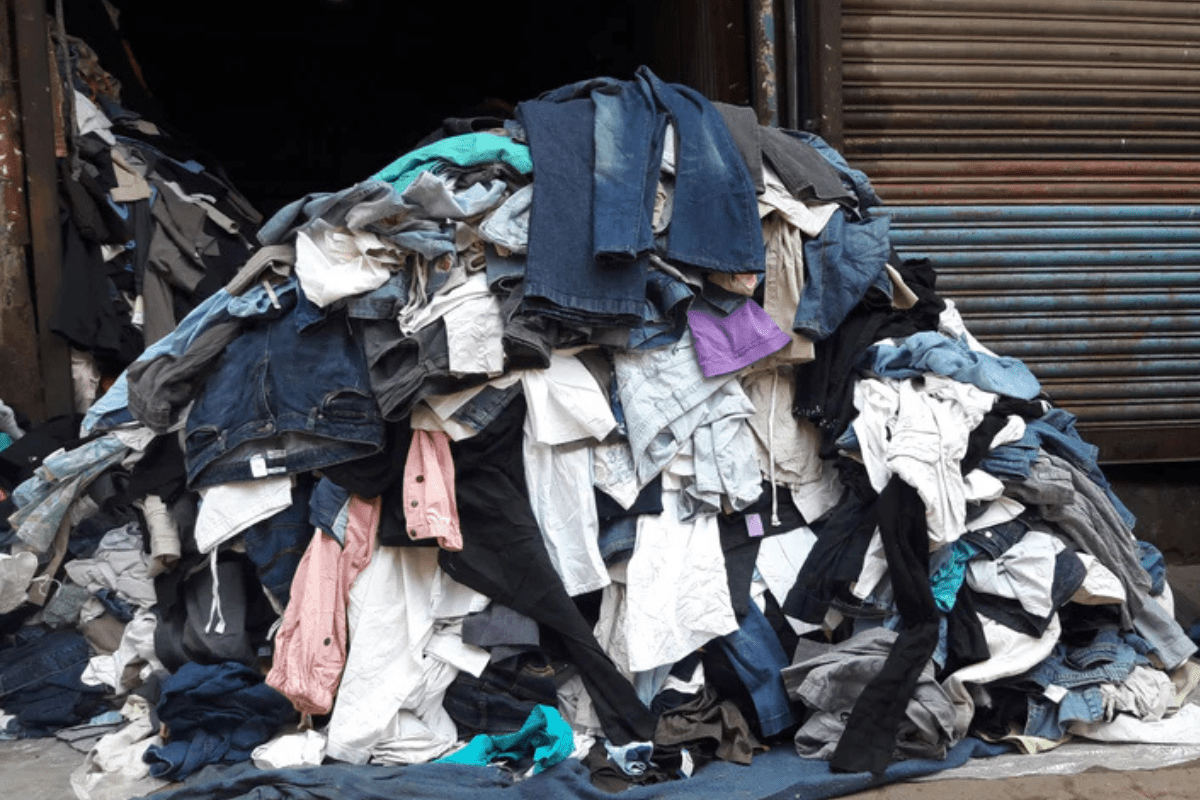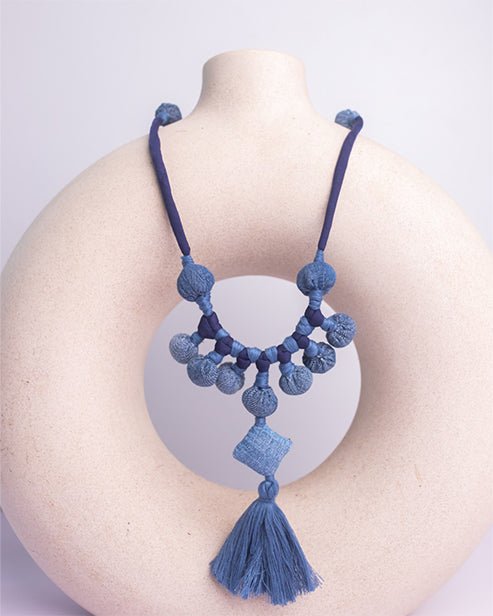Fast fashion isn’t just killing style—it’s killing the planet! Do you know that around 100 billion garments are produced yearly and about 92 million tonnes end up as clothing waste? This number shows the intensity of the environmental crisis caused by fast fashion.
The journey of clothing waste doesn't end in trash bins. The majority of the stuff goes in landfills which can take up to 200 years to decompose and release toxins, chemicals, and greenhouse gases into the environment. So throwing clothing waste into the trash isn't a solution because it will lead to severe air pollution and climate change.
The fashion industry contributes about 10% of global carbon emissions so it is very crucial to think about handling clothing waste. From upcycling old clothes to building a sustainable wardrobe, this article explores what happens to discarded clothing and how we can make more eco-friendly choices.
1. The Lifecycle of Discarded Clothing
Every piece of clothing has a story beyond our wardrobe. It doesn't just disappear, it pollutes the planet and results in a global crisis.
1.1. Where Do Most Clothes End Up?
According to the EPA, Over 85% of discarded clothes are in landfills. Therefore, the landfills overflow with synthetic fabrics that require decades or centuries to decay. On the other hand, incineration results in carbon emissions and hazardous pollutants which worsens climate change. Fast fashion waste leads to soil contamination, water contamination, air pollution, and resource depletion.
1.2. Global Clothing Waste Crisis
Due to the adverse effects of fast fashion waste, different countries have adopted various approaches to tackle the crisis. Some nations have adopted recycling programmes while some export second-hand clothes to other developing countries. Europe and North America export millions of tonnes of clothes abroad each year.
But is this approach really beneficial? Although the second-hand clothing market provides affordable fashion, it also affects local textile industries severely. Countries like Ghana and Kenya receive so much textile waste that their markets are flooded and local manufacturers struggle to compete. The remaining waste goes into rivers and beaches resulting in river clogging, littered beaches and microplastic consumption through marine animals.
2. The Environmental Impact of Clothing Waste
When you throw away old clothes, the vast amount of clothes goes into the landfills resulting in an overflow of landfills due to textiles. This clothing waste takes a long to decompose, releases chemicals into the environment and causes a space crisis in landfills. If the clothing waste isn't decomposed and thrown out, it will pollute the rivers and ocean.
Also burning the textiles results in climate change and emission of toxic gases which can affect human health severely.
3. What Happens to Donated Clothes?
Decomposing clothing waste is quite hard. Every method to decompose them results in serious issues. So, one must think that donating is the best solution.
3.1. Sorting & Reselling in Thrift Stores
When we donate clothes, only 10-20% of the donated clothes are actually resold. The rest of them are either exported, downcycled or discarded. Due to the excess donations managing the supply of the donations gets quite hard. Even if the cloth is in good condition but isn't trendy, it will still end up as waste.
3.2. Exported to Developing Countries
Countries in Africa, South America, and Asia import a vast number of donated clothes. Although the donations create an affordable second-hand marketplace the clothes that are damaged or low quality to be resold end up in the landfill dumps.
Therefore, donating clothes is not an option for guilt-free shopping. Most of the donated clothes never get worn again.
4. Sustainable Solutions: What Can You Do Instead?
The Fashion waste crisis is not going to disappear on its own. To tackle the crisis we need to change the way of consuming and disposing clothing. Instead of filling landfills with old clothes focusing on creating a sustainable wardrobe can make a real difference.
4.1. Upcycling & Repurposing Old Clothes
Why throw old clothes away if we can turn them into something new? Upcycling old clothes gives new life to the discarded cloth, which results in reduced waste and increased creativity.
DIY Sustainable Wardrobe
1. You can transform your old jeans into Upcycled Sling bags or upcycled totes.
2. Turn your old denim into upcycled denim table mats or convert them into upcycled handmade pillow covers to decorate your bedroom.
3. Create stunning upcycled jewellery pieces from old clothes.
4.2. Buying Less & Choosing Sustainable Brands
So amongst all the most sustainable clothing is upcycling your own clothes! Buying durable clothing pieces, supporting brands using organic, upcycled materials, and buying upcycled products instead of buying fast fashion can lead a great way towards conscious shopping.
5. The Future of Fashion Waste Management
As discussed, the fashion industry is one of the biggest industries contributing to pollution. But due to increased awareness and innovation clothing waste management is shifting towards sustainability.
5.1. Innovations in Textile Upcycling
New technologies are helping us to recycle and upcycle discarded fabrics into high-quality products, reducing the need for new clothing pieces. The future of fashion is not just about recycling. Upcycling clothes generally requires less energy and resources that create a new product without actually breaking down the old
5.2. The Role of Consumers in Reducing Waste
So in the end fashion waste is a demand-driven problem. Consumers have the power to change it. So the more you prefer a sustainable wardrobe, the more you can contribute to clothing waste reduction. Conscious consumer choices, innovations and policy changes can together transform the clothing waste into sustainability.
6. Conclusion
So all in all, clothing waste does not end when you throw it in the trash. It has a long journey to get disposed of. The clothing waste often ends up in landfills causing pollution and climate crisis. So instead of discarding old clothes, upcycling old clothes can significantly reduce textile waste. By adapting to small yet impactful changes, we can move towards a fashion that doesn't cost the earth.
Starting the upcycling journey can be tough. So we can help you with it. Donate your old denim to us, and we will create beautiful upcycled denim bags, upcycled accessories and upcycled home goods from the old denim.
7. Frequently Asked Questions (FAQs)
1. How much clothing waste ends up in landfills?
About 92 million tonnes, which is 85% of discarded clothes end up in landfills. These clothes take decades to decompose which results in polluting the plant.
2. Can all clothes be upcycled?
Almost any clothing piece can be upcycled with a little creativity. Old jeans can be upcycled tote bags, upcycled sling bags and much more. Even the leftover scraps can be used for patchwork or upcycled accessories.
3. What happens if I donate my clothes?
Donating your clothes can prevent them from going to landfills, causing pollution and climate change. Also if you donate the clothes to an upcycling brand, they will be repurposed into beautiful sustainable products.
4. How can I reduce my clothing waste?
Buy less and always look for the best quality. Also, you can support sustainable brands and choose upcycled products to reduce clothing waste.
5. What is the best way to dispose of old clothes?
To dispose of the old clothes you can try upcycling clothes and donating the old clothes.





